Red Maple
Acer rubrum
One of the most widespread trees on the East Coast, red maple is native across the eastern United States. It gets its name
from dark red twigs, buds, and flowers and bright scarlet to brick red or pink fruits it develops in spring. In April, red
maples form hazy corridors of subtle burgundy along highways, as they flower before their leaves come out. The fruits ripen
while the leaves grow full size at the end of May. Red maples become conspicuous once again in the fall. A spectacular show
of foliage color in the orange-red palette staged by red maples attracts tourists to New England. The leaves have three main
lobes and sometimes two additional smaller lobes. The bark on the youngest twigs is dark red, becoming pale gray with age.
Mature trunk bark darkens to nearly black, often exfoliating. The tree is fast-growing, reaching 40-60 ft, and adaptable to
a wide range of situations, although its prime habitats are wetlands. Here it often becomes a forest-forming tree, producing
the signature red maple swamp community. Red maples are very tolerant of flooding, although they can grow quite abundantly
in drier habitats. Intensive seedling production in red maples along with their dense root system often makes it difficult
for other plants to compete. Red maple is sometimes exploited for maple syrup, though only on a small scale, as it does not
produce as much syrup as sugar maple.
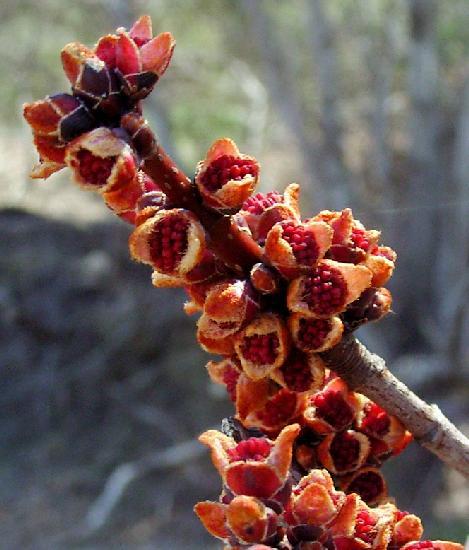
Opening flower buds. Tidmarsh Sanctuary, Plymouth, April 18
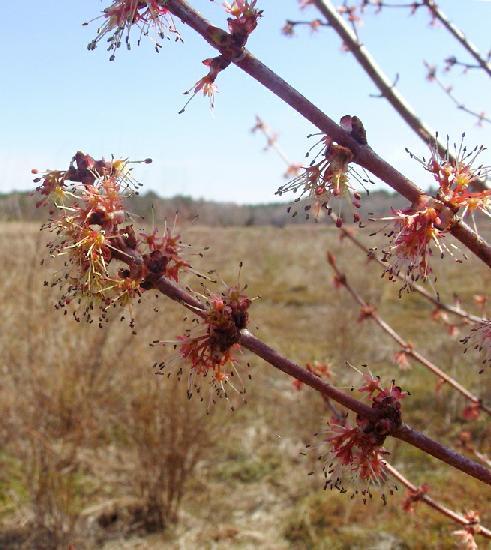
Flowering. Tidmarsh Sanctuary, Plymouth, May 2
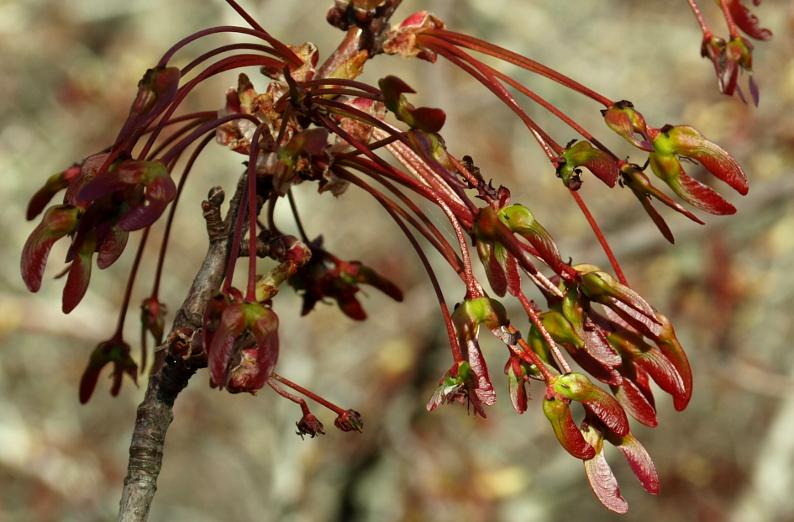
Young fruit. Tidmarsh Sanctuary, Plymouth, May 4
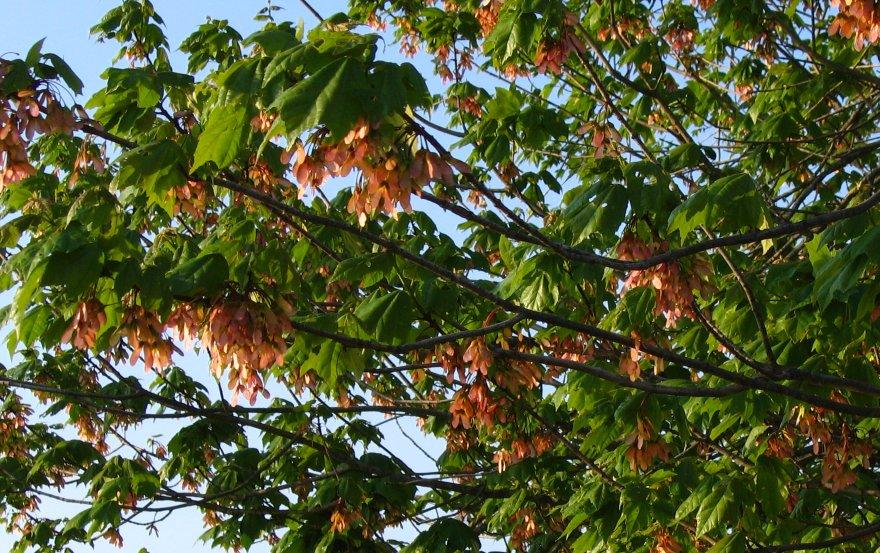
Ripe fruit, May 23
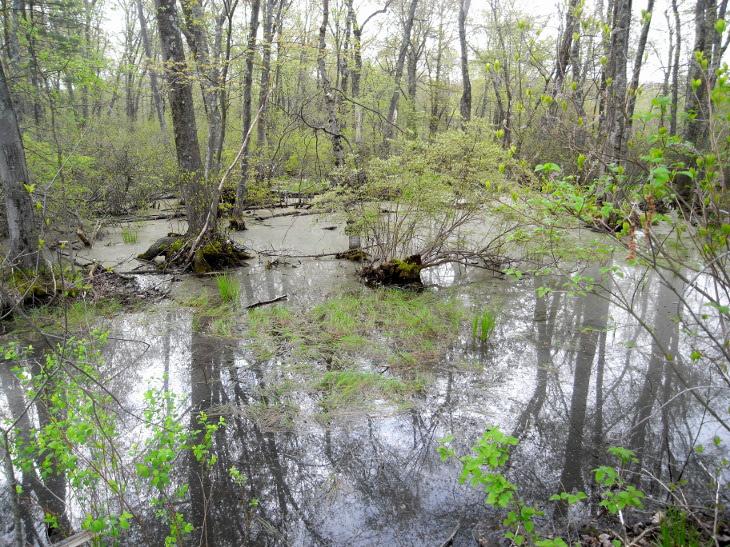
Red maple swamp, a common plant community in Massachusetts. Blue Hills Reservation, Milton, May 8
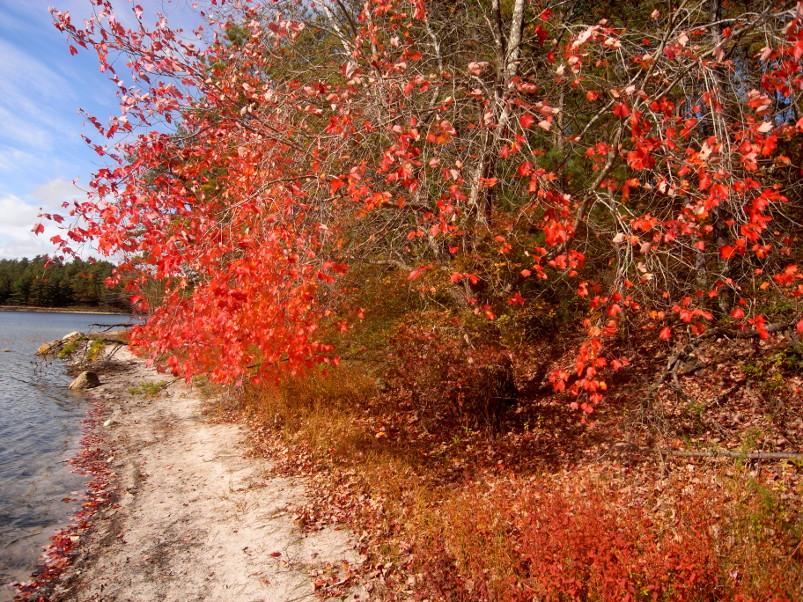
New Long Pond, Myles Standish SF, Plymouth, October 15